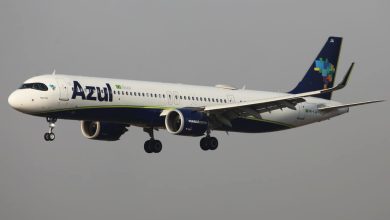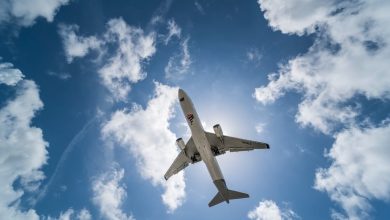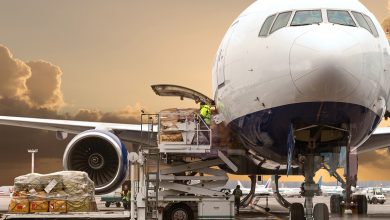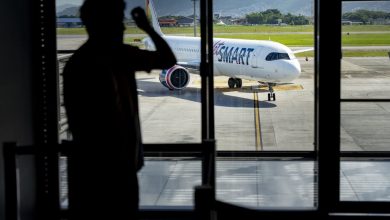Bombardier Challenger 650 vs Dassault Falcon 2000LXS
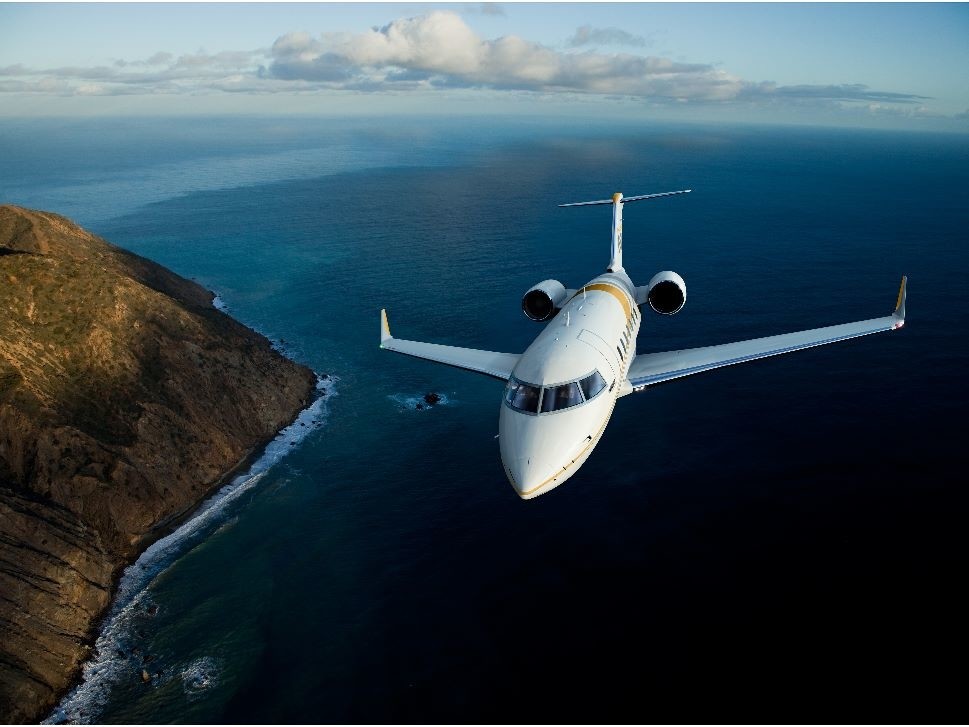
Na comparação de jatos deste mês, Mike Chase fornece informações sobre um par de jatos executivos em produção. Como o Bombardier Challenger 650 se compara ao Dassault Falcon 2000LXS?
Leia a notícia na íntegra:
In this month’s Jets Comparison, Mike Chase provides information on a pair of in-production business jets. How does the Bombardier Challenger 650 compare with the Dassault Falcon 2000LXS?
Following, we will consider the productivity parameters (payload/range, speed and cabin size) and cover current market values with the aim of placing the Bombardier Challenger 650 in the market.
The Challenger 650 is a derivative of the Challenger 605 and was introduced in 2014 with two GE CF34-3B MTO engines that deliver a higher thrust rate (an extra 5% over the previous Challenger 605 model that utilized a pair of PW308C engines). These new powerplants also reduce the take-off field length required.
According to JETNET data, by September 2018 a total of 76 Challenger 650 aircraft had been built, with 74 in operation globally and two in the factory awaiting delivery. Of those, 55 are wholly-owned and 19 are in fractional ownership.
By continent, North America is home to the largest fleet percentage (56%), followed by Europe (25%) and Asia (13%), accounting for a combined 94% of the global fleet. Just over half (53%) of the Challenger 650s in operation today are in fleet ownership with the largest operator being NetJets, with 19 aircraft.
As of September 2018, the Challenger 650 market is comprised of 97% new versus 3% used. The fleet percentage for sale on the used jet market is 2.7% with an average of 75 days on the market.
As a relatively new aircraft model, all 74 Challenger 650 business jets in operation worldwide are ADS-B Out equipped.
Payload & Range
As we have mentioned in past articles, a potential operator should focus on payload capability as a key factor. As displayed in Table A, the Challenger 650 ‘Available payload with Maximum Fuel’ (1,298lbs) is less than that offered by the Falcon 2000LXS (1,590lbs).
Cabin Cross-Section Views
Chart A shows a cabin cross-section comparison, illustrating that the Challenger 650 offers greater width (8.17ft) than the Falcon 2000LXS (7.7ft). However, the height of the Challenger 650 (6.08ft) is less than the Falcon 2000LXS’s 6.2ft.
The Challenger 650 cabin length is shorter, at 28.4ft, compared to the Falcon 2000LXS (31.2ft). Overall, the Challenger 650 has a larger cabin volume at 1,146cu. ft. compared to the Falcon 2000LXS (1,028cu. ft.), which is 11.5% greater.
The Challenger 650 has 115cu. ft. of internal and no external (e.g. hold) baggage space, while the Falcon 2000LXS has 131cu. ft. of internal baggage space and no external baggage space. The typical seating configuration for both business jets is for 10 passengers and two crew.
Range Comparison
As depicted by Chart B using Wichita, Kansas as the origin point, the Challenger 650 (4,123nm) shows marginally less range coverage than the Falcon 2000LXS (4,151nm).
Note: For business jets, ‘four passengers with available fuel’ represents the maximum IFR range of the aircraft at Long-Range Cruise with four passenger seats occupied. NBAA IFR fuel reserve calculation for a 200nm alternate is assumed. The lines depicted do not include winds aloft or any other weather-related obstacles.
Powerplant Details
As mentioned, the Challenger 650 is powered by two General Electric CF34-3B MTO engines each offering 8,729lb static thrust. The Falcon 2000LXS, meanwhile, offers a pair of Pratt & Whitney Canada PW308C engines with 7,000lbst each.
Total Variable Cost
The ‘Total Variable Cost’ illustrated in Chart C, sourced from Conklin & de Decker, is defined as the Cost of Fuel Expense, Maintenance Labor Expense, Scheduled Parts Expense and Miscellaneous Trip Expense. The Total Variable Cost for the Challenger 650 is $2,926 per hour, which is more expensive than the Falcon 2000LXS ($2,827).
Aircraft Comparison Table
Table B contains the new price for each jet, according to Vref. The average speeds and ranges are from Conklin & de Decker, while the number of aircraft in-operation, percentage ‘For Sale’ and average sold are from JETNET.
The Challenger 650 fleet had 2.7% of its fleet ‘For Sale’ as of the end of September 2018 and the Falcon 2000LXS had 1.4% ‘For Sale’. Note the average number of new/used transactions monthly (over the past 12 months) shows the Challenger 650 at two, and the Falcon 2000LXS at one.
Note, the fleet sizes are well matched and the total in-operation fleet for the Challenger 650 is 74 (began manufacturing in 2014) compared to the Falcon 2000LXS at 73 (began manufacturing in 2013).
Maximum Scheduled Maintenance Equity
Chart D depicts/projects the Maximum Maintenance Equity the Challenger 650 has available based on its age.
The Maximum Maintenance Equity figure was achieved the day the aircraft came off the production line, since it had not accumulated any utilization toward a maintenance event. The percent of the Maximum Maintenance Equity that an average aircraft will have available assumes an average annual utilization of 420 Flight Hours and that all maintenance is completed when due.
Depreciation Schedule
Aircraft that are owned and operated by businesses are often depreciable for income tax purposes – in the US this comes under the Modified Accelerated Cost Recovery System (MACRS). Under MACRS, taxpayers are allowed to use accelerated depreciation of assets by taking a greater percentage of the deductions during the first few years of the applicable recovery period (see Table C).
In certain cases, aircraft may not qualify under the MACRS system and must be depreciated under the less favorable Alternative Depreciation System (ADS) where depreciation is based on a straight-line method, meaning that equal deductions are taken during each year of the applicable recovery period. In most cases, recovery periods under ADS are longer than recovery periods available under MACRS.
There are a variety of factors that taxpayers must consider in determining if an aircraft may be depreciated, and if so, the correct depreciation method and recovery period that should be utilized. For example, aircraft used in charter service (i.e. Part 135) are normally depreciated under MACRS over a seven-year recovery period or under ADS using a twelve-year recovery period.
Aircraft used for qualified business purposes, such as Part 91 business use flights, are generally depreciated under MACRS over a period of five years or by using ADS with a six-year recovery period. There are certain uses of the aircraft, such as non-business flights, that may have an impact on the allowable depreciation deduction available in any given year.
The US enacted the 2017 Tax Cuts & Jobs Act into law on December 22, 2017. Under the new Act, taxpayers may be able to deduct up to 100% of the cost of a new or used aircraft purchased after September 27, 2017 and placed in service before January 1, 2023. This 100% expensing provision is a huge bonus for aircraft owners and operators. After December 31, 2022 the Act decreases the percentage available each year by 20% to depreciate qualified business jets until December 31, 2026.
Table D depicts an example of using the MACRS schedule for a 2018-model Bombardier Challenger 650 business jet in private (Part 91) and charter (Part 135) operations over five- and seven-year periods, assuming a 2018 list price at $32.35m, per Vref Pricing Guide.
Asking Prices & Quantity
The current used market for the Bombardier Challenger 650 aircraft shows a total of two aircraft ‘For Sale’, both with ‘Make Offer’ invitations (as of the end of September 2018). The same is the case for the Falcon 2000LXS.
While each serial number is unique, the Airframe (AFTT) hours and age/condition will cause great variations in price. Of course, the final negotiated price remains to be decided between the seller and buyer before the sale of an aircraft is completed.
Productivity Comparisons
The points in Chart E are centered on the same aircraft. Pricing used in the vertical axis is as published in the Vref Pricing Guide. The productivity index requires further discussion in that the factors used can be somewhat arbitrary. Productivity can be defined (and it is here) as the multiple of three factors:
- Four/Eight Passenger Range (nm) with available fuel;
- The long-range cruise speed flown to achieve that range;
- The gross cabin volume available for passengers and amenities.
Others may choose different parameters, but serious business aircraft buyers are usually impressed with Price, Range, Speed and Cabin Size.
After consideration of the Price, Range, Speed and Cabin Size, we can conclude that the Challenger 650 displays a relatively high level of productivity.
Priced at $32.35m new ($2.75m less than a new Falcon 2000LXS jet), the Challenger 650 has more than 10% higher cabin volume. However, the Falcon 2000LXS has a greater ‘Available Payload with Maximum Fuel’ number and slightly greater range capability.
Overall, these two aircraft are well matched, and operators should weigh up their mission requirements precisely when picking which option is the best for them.
In Summary
Within the preceding paragraphs we have touched upon several of the attributes that business aircraft operators value. There are of course other qualities such as runway performance, terminal area performance, and time to climb that might factor in a buying decision.
Both the Bombardier Challenger 650 and Dassault Falcon 2000LXS will continue to be popular on the market for the foreseeable future. Operators in the market for one of these jets should find the preceding comparison useful.
Fonte: AvBuyer 31/10/2018.


